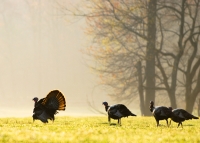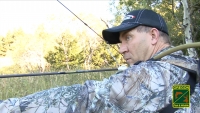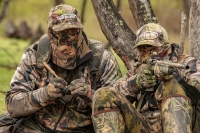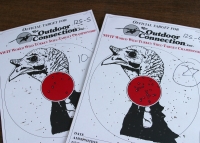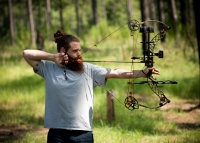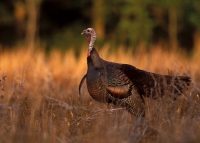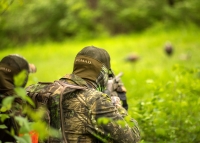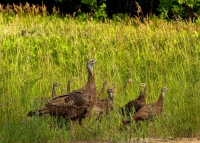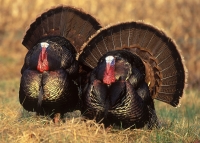
Sight in and pattern your shotgun
How to sight in and pattern a shotgun
There are two steps in patterning your gun:
- Verify your point of impact. Confirm the pellets are hitting where you’re aiming. Often called sighting in.
- Check the pattern of the pellets to see what loads shoot most accurately. Often called patterning.
Sight in scopes and fiber optic sites
If you’re shooting a shotgun with a single bead on top of the barrel, you can go right to patterning.
If you’re shooting a shotgun mounted with a scope or reflex sight, or a fiber optic front and rear site, you’ll need to sight in the gun before you pattern it.
Start with a one-inch pattern on a large piece of paper or cardboard, and shoot from 20 yards away. If possible, shoot from a stationary bench to steady your shot.
Start with an inexpensive lead load for your first shot or two to make the initial adjustments to your scope or sights. You want the majority of the pellets to be centered around the one-inch target.
You’ll also want to change your target after each shot so you can keep track of where the pellets from that particular shot are hitting.
When sighting in a shotgun with a scope, red-dot or reflex sight, note the point of impact and adjust the windage and elevation accordingly.
When sighting in a shotgun with a front bead and rear sight,
- If the mass of pellets hits to the left of the target, move your rear sight slightly to the right. If it missed right, move the rear target left.
- If the shot hit too high on the target, move the sight down. For shots that were too low, move the sights higher.
- When sighting in a shotgun with front and rear sights, make small adjustments at a time.
Once you’ve gotten close with lead loads, switch to your preferred turkey load and see if other adjustments are needed.
Pattern to find the right load and choke
Now that you adjusted your sights so that your shotgun is shooting where you’re aiming, it's time to look at the pattern of the pellets in relation to each other. Is the pattern so wide there aren’t enough pellets hitting the kill zone? Does the pattern skew heavily in one direction or another?
To pattern a gun, start with life-size target of a turkey head and neck. Replace the pattern after every shot.
Take a single shot at the target from 40 yards away. Then count the number of pellets that hit within a 10-inch circle surrounding the center of the target. A good rule of thumb for a turkey load is that it should put 100 pellets inside the circle at 40 yards; at least 18 of those pellets should have hit the head or neck of your turkey target.
If the load you’re shooting falls short of putting 18 pellets in the head and neck of your target, you’ve exceeded the effective range of the shotgun shell. You can extend the range by changing the choke or the shell.
If you’re shooting with a full choke that came with your gun, consider an aftermarket extra-full turkey choke to increase the pellet density at 40 yards.
You also can choose a shell with a different load that will increase pellet density. For example, switching from a 1 ¾ once load with #5 shot to a 2 ounce load with #5 shot increases the number of pellets and may increase the effective range of you shotgun.
Many of today’s modern turkey loads also fire a mix of #5, 6 and 7 shot, resulting in higher pellet density and increasing the effective range of your gun.
Once you’ve patterned your gun at 40 yards, it can be instructive to take similar shots at 20 and 30 yards so see the how tight a good turkey pattern can be at closer range. It will confirm for you that there’s not much room for error when it comes to taking close range shots at a live turkey.

